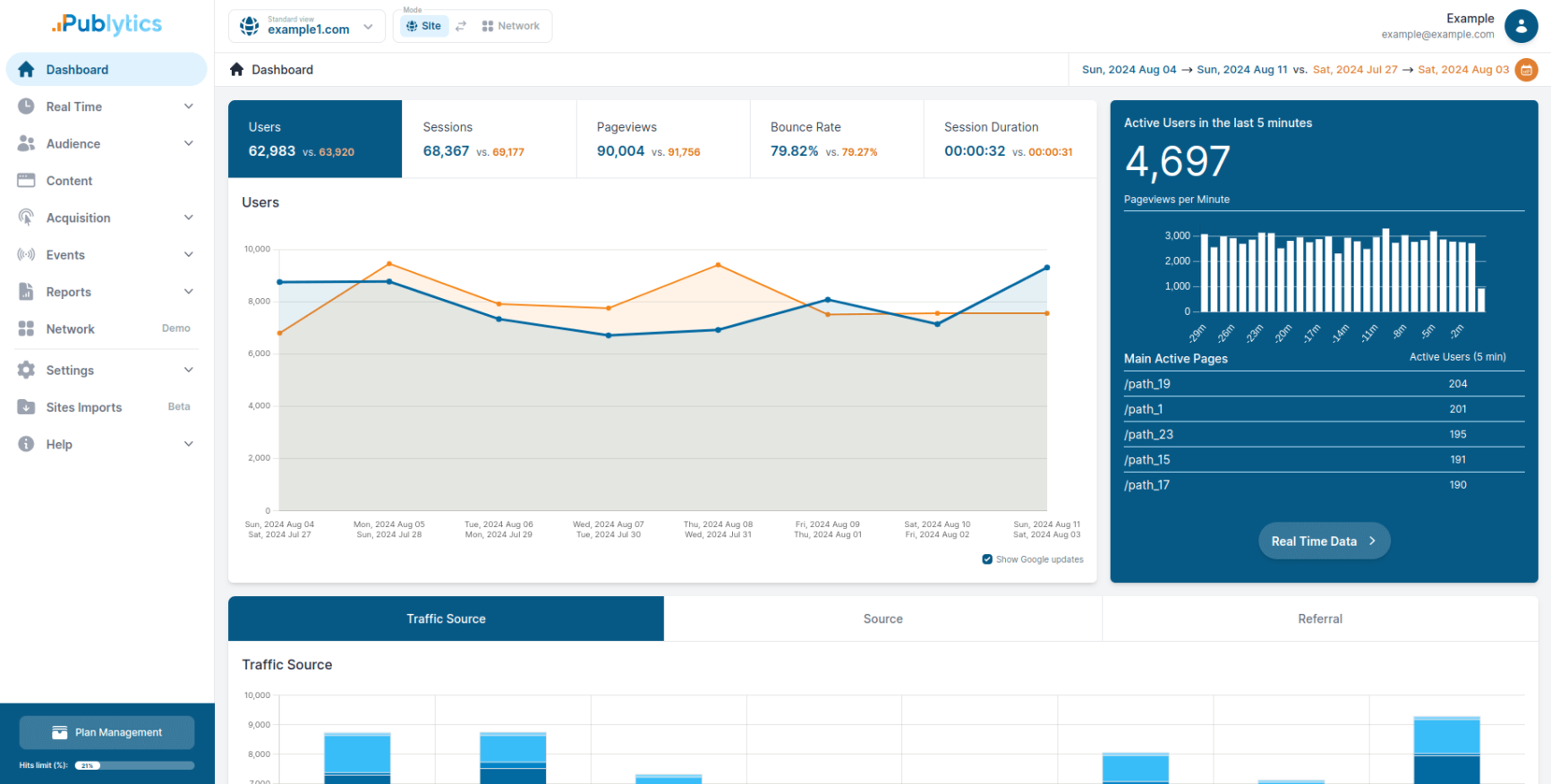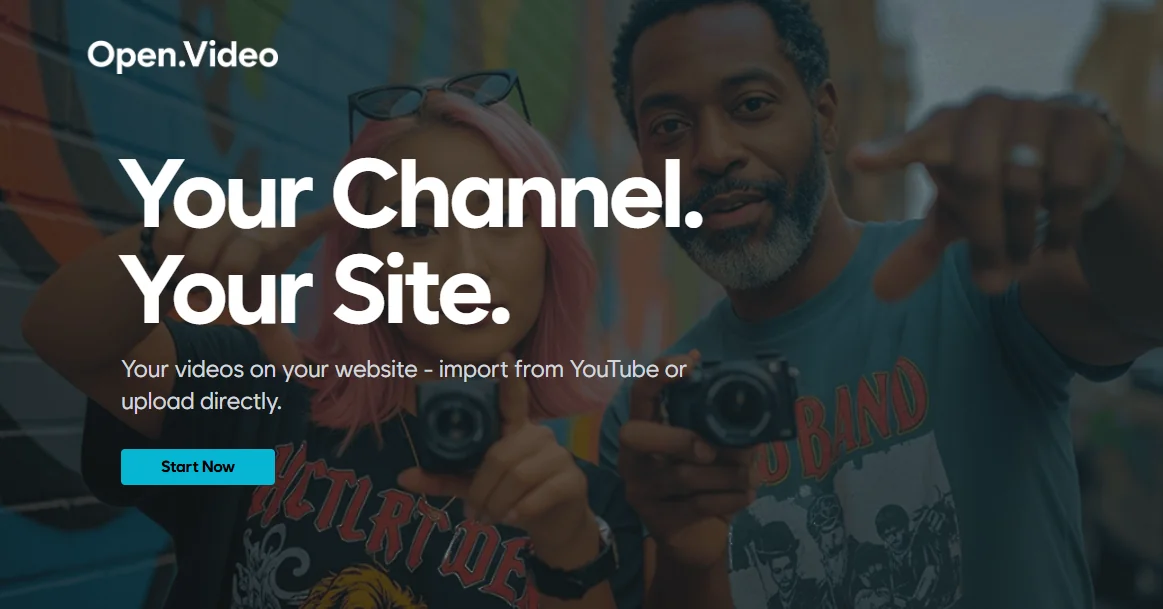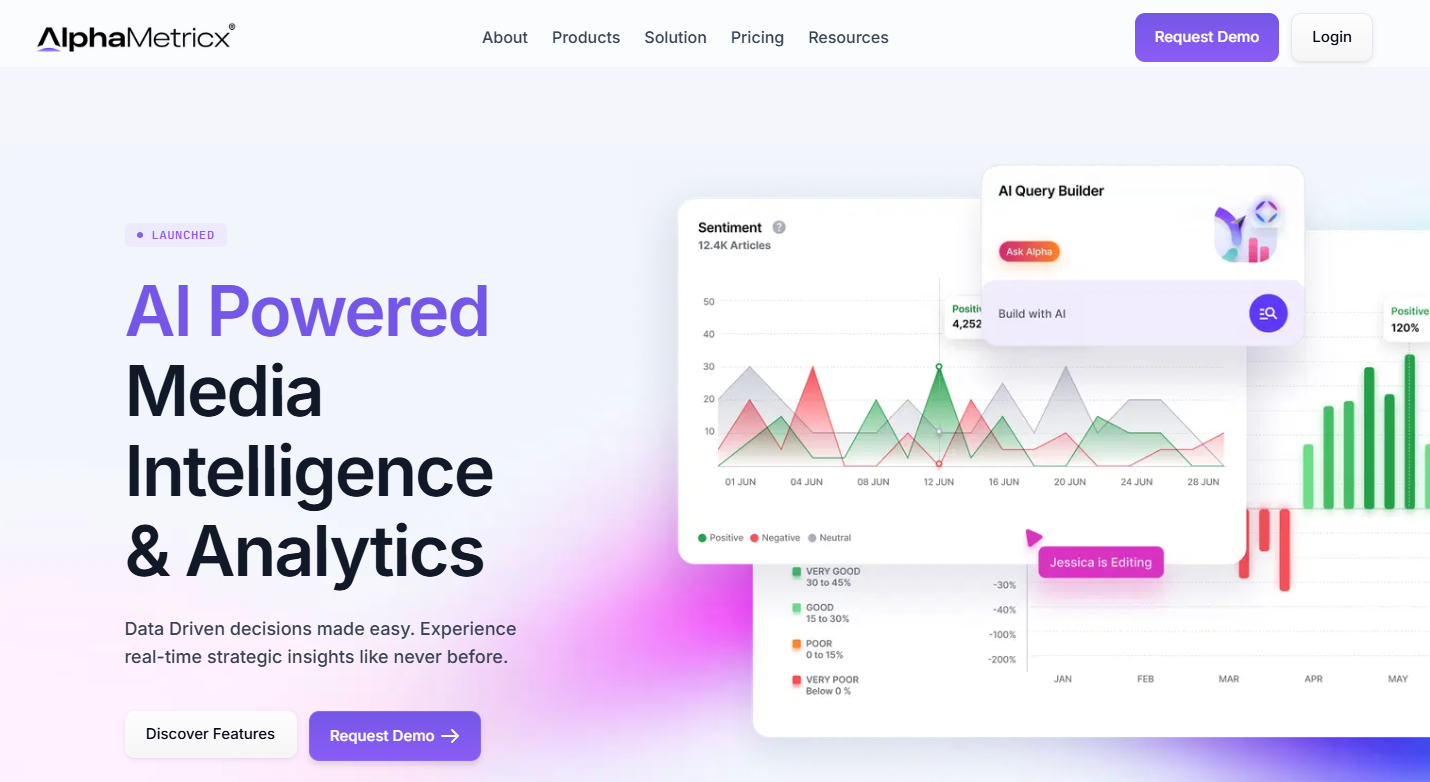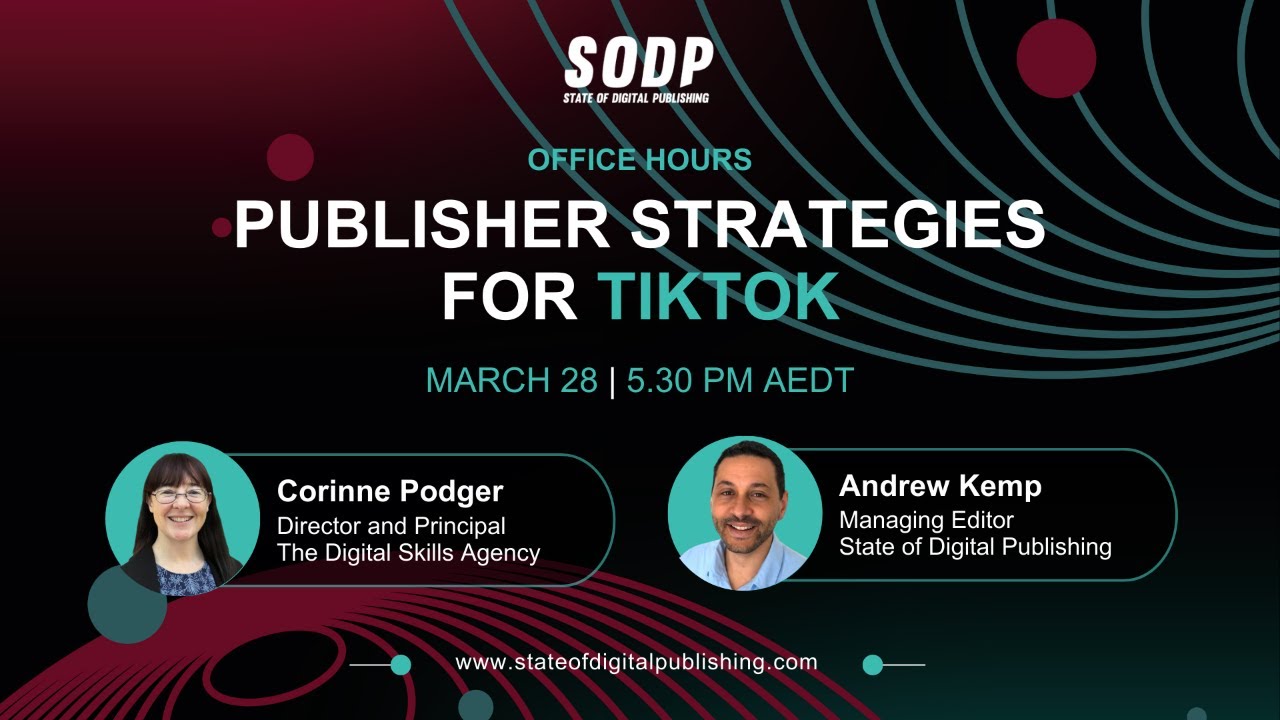The number of publishers embracing TikTok is on the rise as they attempt to appeal to younger audiences with their nigh insatiable demand for short-form video content.
News publishers in particular are trying to reach younger audiences, who have shown a lack of interest in traditional news channels.
TikTok reaches 40% of 18–24s across all markets (PDF download), with 15% using the platform for news. While the platform’s role as a news provider trails other social media networks, such as Facebook and YouTube, it has grown its market share in this space rapidly in the past few years. (See below image)
Source: Reuters Institute’s Digital News Report 2022
Indeed, as much as 67% of US teens aged 13-17 use TikTok, with the number that do so regularly sitting at 16%. This was 50% higher than Instagram, which launched Reels in 2020 to directly compete with TikTok. Instagram users spend just 17.6 million hours per day watching Reels compared with TikTok users’ 197.8 million hours per day.
The opportunity to tap into this growing demand isn’t limited to news providers. Niche and evergreen publishers with the right TikTok content strategies also stand to benefit
With this in mind, we’ve explored the content strategies publishers are already leveraging on the platform as well as ways to monetize content once established. A successful TikTok marketing strategy is essential to underpinning continued investment in the platform.
Understanding the TikTok Algorithm
Before designing a content or monetization strategy for TikTok, publishers need to first understand the social media network’s algorithm. TikTok’s rise in popularity has been faster than any other social media platform, largely because of its content recommendation algorithm.
While the inner workings of TikTok’s algorithm are a closely guarded secret there are a number of third-party studies that have looked at how the algorithm promotes content to its users.
Basically, TikTok’s success story boils down to its ability to correctly identify user interests. The platform is able to build a user profile based solely on how long that user spends watching clips. Users are then fed more videos that appeal to these interest sets, with the algorithm effectively using A/B testing to identify more niche interests to build as accurate a picture of subconscious bias for or against topics as possible.
What this means is that TikTok treats each video as its own separate data point independent of its creator. This is unlike other platforms that have designed an approach that helps build subscriber/follower counts.
Publishers looking to develop a TikTok presence can benefit from watching the evolution of already established content creators. Ladbible, for example, has said it starts new channels with a focus on user generated content (UGC) to build a following before eventually splicing in original content.
TikTok Fundamentals
Before we dive into the list of strategies below, let’s quickly review some basics that publishers should be aware of before they leap into creating their first post.
- Vertical video: TikTok was built from the ground up with vertical video in mind, leveraging the power of vertical swipe to its advantage. Make sure that your content is formatted for portrait viewing.
- Short and sweet: The platform has extended its video length to three minutes and is experimenting with 10-minute videos as well as up to 20-minute videos that can be sold as part of a series. The reality is, however, that shorter TikTok videos of up to 30 seconds do better with audiences.
- Don’t dawdle: TikTok’s vertical scroll design punishes content that isn’t immediately attention grabbing. If your hook doesn’t land in the first five seconds you’re at greater risk of being skipped.
- Caption the moment: Video captions not only help provide context for the video but can also be used to tag other creators and use trending or informative hashtags.
- Visual and audio effects: TikTok offers creators an advanced editing suite for a reason. These tools can be used to help publishers stand out and boost user interest.
- Quality and consistency: TikTok’s algorithm favors highly engaging content, which means publishers should rely too heavily on brand recognition to do their heavy lifting. Original content needs to be of a high quality and produced at a consistent pace to generate audience momentum.
8 Content Strategies for TikTok
There are dozens of different content strategies publishers can pursue, everything from news and educational content to product demonstrations and trend-jacking.
However, a number of these strategies use overlapping principles and we’ve pared back the list to nine that we think are worthwhile for publishers that are either already established on the platform or are thinking of entering the space.
These strategies were selected not because they are general approaches that can be applied to a publishing model with some tweaking, but because high-profile publishers are already using them to great effect already.
1. Timely Content
Publishers should think of producing timely content as a version of news reporting, where the content needs to provide insight on current events. Other than respecting the fundamentals of news reporting, with content needing to be accurate, timely and relevant, there is no one-size fits all news reporting on TikTik.
For example, NBC News — the largest news publisher on TikTok based on post engagement — posts a mix of snippets covering current events, explainer content, highlights from government meetings as well as UGC with annotations.
There’s an argument to be made that traditional broadcasters have an easier time transitioning to TikTok given they make video based content already.
Spanish start-up Ac2ality, however, has built a 4.3 million following on TikTok through news explainer content.
2. Explainer Content
Explainer content is extremely versatile. While it can be used to explain the news — as covered above — it can also be used for evergreen subjects.
How-to videos fall under the explainer category. By providing step-by-step instructions on how to do something, publishers can establish themselves as a subject matter authority.
One example of a long-established publisher embracing the platform is Popular Mechanics, which was established in 1902. The publisher creates a blend of news, product review and “how-to” articles. On its TikTok channel, however, the focus is more on evergreen content such as how to tie a slip knot, what causes split-brain syndrome and sports car previews.
3. User-Generated Content (UGC)
This is one of the easier ways for publishers to enter the TikTok landscape. Ladbible Group, the biggest news publisher on the platform, not only uses UGC to help gain momentum for new channels but continues to include it even after a channel is firmly established.
Publishers can either encourage their followers to create content that relates to their niche — perhaps using branded hashtags — or they can simply repost existing content to their channel. Let’s look at a recent example on Ladbible’s main channel:
While Ladbabible posted the above video in March 2023, it was originally shown on content creator Michelle James’ account in August 2022. However, the original video’s popularity (it has racked up around 30 million views) guarantees some traction on Ladbible’s account.
Ladbible has added overlay text and a caption to more closely align with its brand, but this is a relatively easy win in terms of building a content library.
Creating a hashtag challenge is another way to engage audiences and encourage UGC and can be as simple or as complex as is appropriate for the target audience. One of the most well known hashtag challenges is the dance challenge, but since then brands and creators have launched a wave of hashtag challenges.
Publishers are also getting on board with the craze, with CNN Philippines taking part in the “Amazing dance challenge”.
4. Reviews, Sneak Peeks, Demonstrations
Product reviews are a great way of capturing new audiences that are interested in a particular product. The downside is that, given the relatively short viable video length, publishers will have to be more creative in how they review products.
Popular tech reviewer MKBHD gives an idea on how TikTok can be used to review one aspect of a product with his video on the new yellow iPhone 14.
Beyond reviews, however, publishers can use TikTok to both provide sneak peeks of upcoming products as well as demonstration videos for the same product. This means content idea lifecycles can be extended, though this approach definitely leverages the explainer content strategy to make it work.
5. Behind-the-Scenes Content
Publishers can also provide behind-the-scenes looks at their working day in order to build a more personal connection with their audience. This can take the form of showing the team at work, the creative process or even sneak peeks of upcoming content.
Marvel is one of the biggest media companies already using this strategy on the platform, it not only showcases how its comic book artists draw panels but also what goes into making its movies.
6. LIVE Streaming
TikTok’s LIVE feature allows publishers to live stream videos without time limits, while still having access to all of the platform’s filters, effects and camera controls.
The network does advise users to live stream when their audience is most active and also recommends posting a new video immediately before launching a stream. This video will show a special icon to viewers who can then click to join the LIVE session.
Sky News used the LIVE feature to stream Queen Elizabeth II’s funeral, leveraging already existing coverage to create content on the site.
Taking advantage of this feature is more complicated when you don’t already run scheduled broadcasts, however. One thing to consider is how long a live stream should be, with TikTok advising users to lean towards 30 minutes.
7. Parodies or Skits
Publishers can create comedic content, such as parodies or skits to help them stand out and build audience engagement.
Morning Brew, the prolific newsletter group that started out as light-hearted business recaps for college students, uses this approach on its TikTok channel. The publisher parodies TikTok trends such as New York rent price interviews and the double the money challenge.
8. Series
Publishers might also want to consider creating a series of short videos in order to tell a story in more depth or even or provide valuable insights over a period of time.
It’s worth noting that TikTok backed the idea of a number of video series on the platform in 2021, when it agreed to find sponsors for several Buzzfeed-produced live weekly shows — the first of which was “I Made This”.
The one-year deal, which was announced in November that year, saw BuzzFeed agree to create an eight-part series through its culinary content division Tasty, while TikTok agreed to secure product placements for each show. The first episode featured home appliance brand Cyetus.
7 TikTok Content Monetization Strategies
The simplest and most reliable way to monetize content on TikTok is to build audience engagement and followers, which we’ve covered above. This is the foundation for everything else that follows. Great content, produced at scale, drives engagement and attracts larger audiences.
Once a publisher has that momentum, however, what’s next? There are several viable approaches here and we recommend publishers experiment with a few to see which works best.
1. Brand Deals
Publishers can partner with brands to promote their products or services, either through the creation of sponsored content or via product placements. This very much adheres to the principles TikTok influencer marketing already established.
One example of this approach was Buzzfeed’s sponsorship deal with TikTok for live weekly shows, which we’ve mentioned above. BuzzFeed was the first media company to sign a brand sponsorship deal with TikTok for live weekly shows, with the sponsor’s products appearing in the posts.
Plenty of large and medium sized publishers have gone it alone in developing brand deals, however, with US-based Group Nine signing “close to 10 branded content campaigns” in March-December 2020.
While TikTok is yet to launch a dedicated brand partnerships program, the network launched the TikTok Creator Marketplace (TTCM) to help all creators seal brand deals.
TikTok Creator Marketplace
Launched in 2019, the TTCM is the official platform for brand and creator collaborations on TikTok. TikTok claims it had more than 800,000 qualified creators on the platform as of December 2022.
The TTCM is designed to allow brands and agencies to easily access and work with creators on delivering high-performing campaigns based on your brief.
TikTok hasn’t clearly defined eligibility requirements, saying only that one eligibility requirements such as age, followers, video content and engagement have been met, then an invite to join or apply to the platform will be sent to the creator.
The platform’s requirements, however, are reported as follows:
- A minimum of 10,000 followers (note: formerly 100,000 for the Creator Marketplace)
- A minimum of 100,000 video views within the last 30 days
- You must “publish original content”
- You must meet TikTok’s age requirement (18+ years old)
2. TikTok Ads
TikTok offers advertisers a plethora of features for designing ad campaigns through the TikTok Ads Manager, including the following ad types:
- In-feed ads
- Image ads
- Video ads
- Spark ads
- Pangle ads
- Carousel ads
However, while publishers can generate ad revenue through this platform, this is a more passive approach than traditional ad revenue systems where publishers manage ad inventory. Unlike programmatic ad solutions, publishers looking to actively sell ad spots will need to directly partner with a brand or an ad agency.
3. Subscriptions
Paywalled content is already a major component of many publishers’ monetization strategies and now, six years after launch, are now a TikTok feature.
TikTok launched Series in March, which allows “eligible” creators to post collections of up to 80 videos, with each video being up to 20 minutes long, that are only accessible to subscribers. Publishers can decide for themselves how much they want to charge for these collections.
4. White-Labeling
Publishers can also create and license content to other companies on TikTok who can then rebrand and post it as their own.
Why would publishers want to do this? Well, white labeling allows publishers to tap into new audiences and increase their revenue. Larger publishers can leverage their resources to reach audiences they might not traditionally connect with.
Spanish news publisher Ac2uality, mentioned above, uses a mix of this model and brand sponsorships.
5. Affiliate Marketing
Publishers with experience in affiliate marketing either via their websites or on other social media platforms shouldn’t struggle to adapt to TikTok.
Content from our partners
Essentially, the process boils down to publishers encouraging viewers to click on a custom affiliate link within their TikTok bios. The process is still in alpha, however, meaning there are restrictions on who can place links in their bios. These include:
- Must have a TikTok Business account
- Must have at least 1,000 followers
- Must be located in the US, UK, Russia, Indonesia and Canada
6. Direct Sales
While there are few examples of publishers foraying into branded merchandise, for those that have developed a retail aim, TikTok represents an opportunity at cross-division promotion.
National daily The Australian, for example, has developed its own wine service, acting as the digital shop front for smaller, independent wine producers. While it doesn’t appear that The Australian has promoted its eCommerce division, the potential remains for such TikTok marketing campaigns.
Alternatively, publishers can create and sell their own digital products — such as ebooks, courses or digital downloads — and promote them through their TikTok content.
tiktok marketing campaigns
7. TikTok Creator Fund
We’ve deliberately placed the TikTok Creator Fund last on this list. While TikTok launched the Creator Fund in 2020 to provide financial support to creators, mounting criticism suggests publishers shouldn’t count on the program as a monetization tool.
There are three reasons for this caution:
- Lack of transparency: TikTok pays using a performance-based sliding scale, without providing any target metrics. This means only TikTok knows why it pays what it does.
- Fixed pot: The company’s $2 billion fund is accessible to an ever growing pool of creators, meaning smaller payouts for each.
- No oversight: TikTok monitors its own payouts, which means if it’s slow to spend the funding — or doesn’t pay out at all — there’s no one to hold it accountable.
With that said, if publishers do meet the program’s requirements then there is little reason not to sign up to the program. To be eligible, applicants must:
- Be 18 or older
- Be a legal resident of the US, UK, Germany, Italy, France or Spain
- Adhere to TikTok’s user terms and community guidelines
- Have at least 10,000 organic followers
- Have at least 100,000 organic views in the previous 30 days
TikTok Research
Once publishers have created a strategy fusing content and monetization objectives, it’s vital to continue evaluating its performance.
Iteration is key to success in the digital marketplace and TikTok has a couple of useful tools publishers can use to assess their performance on the network.
TikTok Analytics
TikTok’s business accounts have access to analytics that not only provide insights on metrics such as follower count, likes, comments and shares but also weekly and monthly growth, total video play time and demographic.
The analytics tool covers four main categories:
- Overview: This tracks follower growth, video and profile views, likes, comments, and shares up to the last 60 days.
- Content: While this section only provides insights on the preceding seven days it contains extended data for each post including total views and likes, comments, shares, average watch time, etc.
- Followers: Publishers can use this section to understand more about their audiences and the times they’re most active over a seven- and 28-day window.
- LIVE: This shows total live stream views for the last seven or 28 days as well as new followers and total time.
TikTok has warned against using analytics as the sole guide to content creation, noting that performance “fluctuations are normal”. This is likely owing to the absence of creator bias when the algorithm recommends content.
Keyword Insights Tool
TikTok launched its Keyword Insights tool in early March to the delight of some inbound marketers. The tool can be used to understand trending script keywords — that appear either as voice-overs or ad text.
Marketers can use the tool to understand which keywords are performing according to region, industry, objective, type and time.
While the tool is certainly a boon for advertisers — providing such insights as the keyword’s ranking, popularity and click-through rate (CTR) — it’s also a useful tool for publishers looking to understand campaign engagement and reach.
Publishers can use the tool to help guide the development of their affiliate marketing programs, brand sponsorship deals and even direct ad negotiations.
Final Thoughts
Publishers must follow audiences if they want to survive. Print-only publications have struggled to remain relevant in the digital age and now, as social media platforms gain more traction with younger audiences, they represent a new battleground.
For those looking to tap into TikTok’s reach it’s important not only to settle on a content strategy, but also on their own TikTok marketing strategy, one that compliments and synergizes with their editorial agenda.
Publishers that focus on mixing product reviews, sneak peeks and demonstrations into their editorial schedules will likely find it easier to conduct outreach for brand sponsorships, advertising and affiliate marketing.
While TikTok has experimented with longer format content, engagement figures point to shorter videos being better to build a following. With that said, publishers of longer-form may now be in a better position to this type of content thanks to the introduction of a paywall which will limit user “bounce rate”.
Publishing on TikTok is only gaining momentum and it’s important for publishers interested in joining the space to begin experimenting with content formats as soon as possible to see what works and what doesn’t. Audiences built on one platform shouldn’t be expected to transfer seamlessly to another.




















